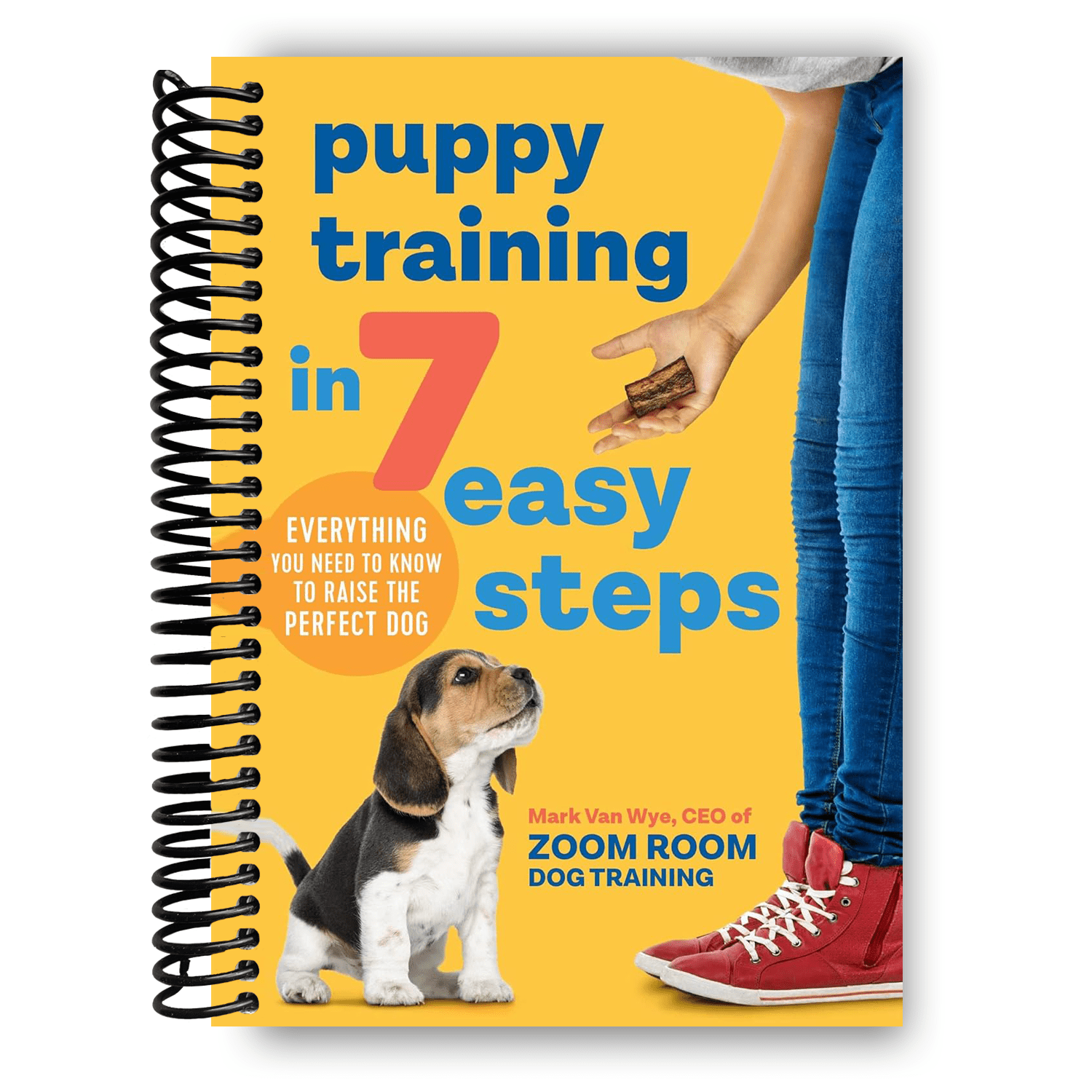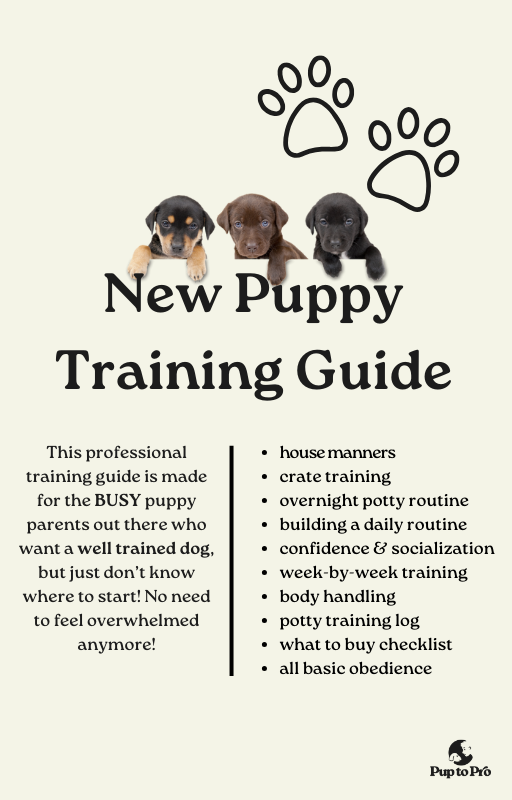Top Puppy Educating Strategies to Make Certain a Well-Behaved Pet Dog
Efficient pup training is important for cultivating a well-behaved companion, and various techniques can significantly affect a pet's growth. Among these, favorable reinforcement sticks out as a fundamental strategy, advertising trust and encouraging preferable habits. Uniformity in commands and early socialization are equally essential, laying the groundwork for a well-adjusted family pet. In addition, the duties of pet crate training and chain rules can not be forgotten. As we discover these approaches further, it becomes clear that the success of pup training pivots on a combination of approaches that can transform your family pet's actions in remarkable methods.
Positive Support Methods
Making use of positive reinforcement techniques is crucial for reliable puppy training, as it motivates wanted habits through rewards instead of punishment. This technique takes advantage of the all-natural understanding processes of canines, strengthening etiquette by supplying immediate and tangible rewards, such as deals with, appreciation, or play. By linking positive end results with certain activities, puppies are more probable to duplicate those habits in the future.
Effective positive reinforcement involves timing and consistency. Incentives should be provided quickly after the preferred habits strikes create a clear link in the puppy's mind. Additionally, varying the kinds of rewards can maintain a puppy's passion and inspiration throughout the training process. Some puppies may respond far better to verbal praise while others may choose a preferred plaything or reward.

Uniformity in Training Commands
Preserving uniformity in training commands is important for enhancing the lessons discovered through positive reinforcement techniques. Pets prosper on regular and predictability, so making use of the very same spoken commands and hand signals for specific behaviors is necessary. This harmony assists pups understand what is anticipated of them, reducing confusion and frustration for both the pet and the fitness instructor.

Timing also plays a significant duty in uniformity. Commands should be supplied promptly during training sessions and followed instantly by favorable support, such as deals with or appreciation. This instant response aids strengthen the organization in between the command and the preferred actions.
Including consistency right into training sessions will certainly develop a steady discovering environment, promoting quicker proficiency of commands. Ultimately, a well-structured approach fosters a strong bond in between the puppy and its proprietor, bring about a much more obedient and mannerly family pet.
Socializing With Various Other Family Pets
Socializing with other pet dogs is essential for a young puppy's development, as it helps them find out proper habits and communication skills in varied social contexts. Early interactions with different animals can considerably influence a puppy's temperament and adaptability in various situations. When puppies are exposed to a selection of pet dogs, they end up being a lot more positive and much less frightened, which can prevent potential behavior concerns later in life.

In addition, observing body language during interactions is crucial. Show your pup to identify signals from other family pets, such as indicators of playfulness or pain, promoting common regard and understanding. Regular socialization not just enhances your young puppy's social abilities yet also adds to their total well-being, creating an extra harmonious living atmosphere. Finally, focusing on communications with other pet dogs will yield a socially proficient and all-round canine.
Cage Training Advantages
Acknowledging the numerous benefits of pet crate training can significantly improve both the young puppy's and owner's experience. Crate training offers a protected and risk-free environment for puppies, guaranteeing they feel shielded when left alone. This sense of security can considerably reduce anxiousness and stress and anxiety levels for both the family pet and the owner.
Furthermore, pet crates offer as a beneficial house-training device. Puppies naturally avoid soiling their sleeping location, consequently encouraging them to hold their bladder till they are allow outside. This instinct can expedite the house-breaking process, cultivating great practices check out this site early.
When without supervision,Crate training also helps in taking care of a young puppy's habits - puppy training. By providing an assigned area, owners can protect against devastating actions, such as eating on furnishings or entering into dangerous materials. Dog crates can be useful during traveling, providing an acquainted space that can help calm a puppy in new environments.
Lastly, establishing a crate regular encourages self-reliance, enabling pups to discover how to be alone without worry. On the whole, pet crate training is a reliable approach for advertising serenity, safety and security, and self-control, bring about a well-adjusted, well-behaved family pet.
Chain Training Fundamentals
Leash training is a fundamental aspect of responsible animal ownership that makes certain a safe and enjoyable walking experience for both the puppy and its proprietor. Correct chain training begins early, preferably throughout the puppy's socializing period. When out in public., this training helps develop excellent behaviors and promotes positive actions.
To start, choose a comfortable collar or harness that fits your young puppy well. Connect a sturdy chain, guaranteeing it is not too long, as this can cause pulling and erratic behavior. Begin in a quiet environment to reduce distractions and gradually present your young puppy to brand-new environments.
Use favorable support methods, such as deals with and appreciation, to motivate your pup to stroll beside you. If your young puppy pulls, stop walking and wait for them to return to your side prior to continuing.
Furthermore, include useful link brief training sessions with fun diversions to construct your pup's emphasis. With commitment and persistence, chain training will certainly cause a well-mannered friend, making walks satisfying for both the owner and the puppy.
Final Thought
In verdict, using effective puppy training techniques is crucial for developing a well-behaved animal. address Overall, these methods jointly advertise a harmonious relationship in between puppies and their proprietors.
As we discover these approaches further, it becomes clear that the success of puppy training hinges on a combination of techniques that can transform your animal's actions in amazing means.
Using positive support techniques is vital for effective puppy training, as it encourages desired behaviors via benefits rather than penalty.Crate training likewise aids in managing a pup's behavior when unsupervised.Leash training is a fundamental element of accountable animal ownership that guarantees a satisfying and risk-free strolling experience for both the pup and its owner.In final thought, using effective pup training techniques is crucial for creating a well-behaved family pet.